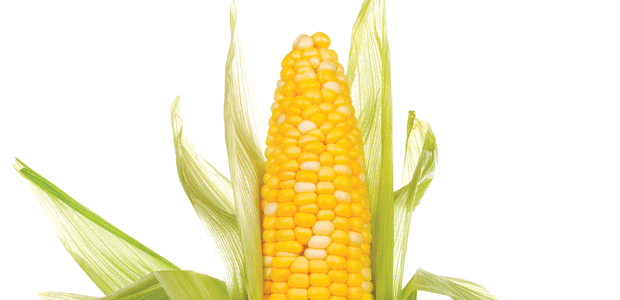
After the decadence of the holidays, you may want to shift your focus to lighter foods and healthier eating habits. But with so many dietary options to choose from, where’s a person to start? To help select the best diet for you, here’s an overview of the most popular diets, their pros and cons, and the exciting research that supports (or doesn’t support) their use.
Before starting any new diet or taking any new supplement, check with your health care practitioner to ensure that it’s right for you, especially if you have any underlying health condition or are pregnant or breastfeeding.
The ketogenic (keto) diet
The keto diet has taken North America by storm, but is it really all it’s cracked up to be? This is a low-carb and high-fat diet, similar to the Atkins diet. The goal of this diet is to obtain most calories from fat- and protein-based foods rather than carbohydrates such as sugar, sweetened carbonated beverages, pastries, and breads.
It’s based on the premise that eating fewer than 20 to 50 g of carbohydrates per day initiates a process known as “ketosis” after three or four days, resulting in the breakdown of fat and protein in the body for energy. While its primary focus is weight loss, proponents believe that the reduction in insulin production may have cancer prevention and heart health benefits.
However, the research on keto’s role in cancer is still controversial, and more research needs to be done. Also needing more research is the potential link between a keto diet and the risk of nonalcoholic fatty liver disease (NAFLD), an umbrella term for a variety of liver conditions that are not linked to alcohol consumption.
However, the ketogenic diet may shine when it comes to epilepsy. A study published in the <Biomedical Journal> found the ketogenic diet was particularly beneficial in the treatment of epilepsy when medium chain triglycerides (MCTs) are the focus of the fats in the diet. MCTs are found in coconuts and foods including coconut oil and the cream and milk derived from coconut.
Some of the side effects of the keto diet may include constipation, mildly low blood sugar, or indigestion. It may be linked with kidney stones or excessive acidity in the body (acidosis); or headaches, weakness, and irritability, the latter of which have been referred to as the “keto flu.”
Consider supplementing with
- magnesium
- potassium
- fibre
- digestive enzyme
Sample grocery list
- avocado
- bacon
- butter
- chicken breasts
- eggs
- ground beef
- mushrooms
- peppers
- sausage
Elements of keto diets
A keto diet typically contains
Fat: 70 to 80%
Protein: 10 to 20%
Carbs: 5 to 10%
The paleolithic diet
The paleolithic diet, or the “paleo” or “caveman” diet, is based on the premise that we should follow a diet similar to that eaten by our ancestors 2.5 million to 10,000 years ago in the Paleolithic era, which its proponents believe is based on hunting, fishing, and gathering.
While it’s impossible to know exactly what cavepeople in all regions of the globe ate (and indeed, they likely ate different foods in various regions), the diet is essentially based on low-carbohydrate and high-protein foods, coupled with plenty of water and regular exercise. Some of the restrictions include dairy, wheat, oats, sugar, salt, highly processed foods, potatoes, legumes, peas, and peanuts. Meat is preferably grass fed or wild game.
This diet seems to be particularly effective in the treatment of metabolic syndrome, a cluster of risk factors for heart disease, including obesity, insulin resistance, and hypertension (high blood pressure). In a study published in the <American Journal of Clinical Nutrition>, researchers found that the paleo diet improved several markers for metabolic syndrome.
Paleo diet proponents claim blood pressure-controlling and blood sugar-balancing benefits; however, if you have a health problem such as heart disease or kidney disease, it may not be right for you. As well, some highly active individuals may experience energy reduction.
Sometimes referred to as “the steak and bacon diet,” the paleo diet may be harmful to heart health, as it can be high in saturated fat. Diets high in animal protein have also been linked to colorectal cancer.
Consider supplementing with
- calcium
- coenzyme Q10
- vitamin D
Sample grocery list
- grass-fed beef
- fish
- eggs
- chicken
- almonds and almond butter
- berries
- sweet potatoes
- coconut oil/extra-virgin olive oil
- avocado
- vegetables (broccoli, spinach, tomatoes, onions, carrots, leafy greens)
Water is important!
Drink plenty of water on the paleo diet to offset the metabolic waste of protein foods.
Mediterranean diet
A diet packed with fruits, vegetables, fish, legumes, healthy fats, and whole grains, and with less reliance on meat and dairy than the standard American diet, the Mediterranean diet is considered by many nutritionists to be a very healthy option for long-term health. As the name suggests, it’s based on the traditional way of eating espoused in the Mediterranean region, where lower rates of death due to heart disease has been observed.
The Mediterranean diet may be beneficial in the prevention or treatment/management of asthma, breast cancer, cognitive decline, colorectal cancer, depression, diabetes, erectile dysfunction, heart disease, and, of course, high body mass index (BMI).
In addition to the heavy reliance on fruits and vegetables, the inclusion of olive oil is likely one of the reasons for the Mediterranean diet’s many health benefits. Research in the journal <Nutrients> suggests olive oil consumption may reduce the markers of inflammation.
The Mediterranean diet is likely also more affordable than many other dietary options due to its reliance on legumes, fruits, and vegetables.
Less diet and more of a way of life, there are no formal restrictions on the Mediterranean diet; however, you may want to limit your intake of wine to two drinks per day at most.
Consider supplementing with
- calcium
- iron (supplement only if you’ve been found to be deficient)
Sample grocery list
- fish
- extra-virgin olive oil
- legumes
- leafy greens
- vegetables (bell peppers, cauliflower, eggplant)
- fruits (berries, grapes, figs, apricots)
- whole grains (oats, brown rice, rye, whole grain bread and pasta)
- nuts and seeds
- olives
Limit simple carbs
Reduce your intake of foods such as pasta and bread if you’re not fairly active and wish to lose weight.
Vegan diet
Veganism involves a strict vegetarian diet of plant foods such as fruits, vegetables, grains, legumes, nuts, and seeds. It’s devoid of all animal products, including meat, poultry, fish, dairy, eggs, and honey. While it is a dietary approach, many proponents avoid animal products as part of their lifestyle for health and environmental purposes, such as the avoidance of clothing or personal care involving animal ingredients or byproducts.
A vegan diet can be made up of healthy whole-plant foods, including whole grains, fruits, vegetables, and grains, but is not always healthy if it includes high amounts of packaged or processed foods.
A study published in the journal <Progress in Cardiovascular Diseases> found that a plant-based diet can slash mortality risk from heart disease by 40 percent. The study authors also note that plant-based diets are the only dietary pattern to reverse coronary heart disease.
In another study published in <PLOS Medicine>, researchers found that a healthy vegetarian diet, such as veganism, substantially reduced diabetes risk, particularly when rich in high quality plant foods.
It’s advisable to include protein-rich plant foods in your diet to ensure adequate amounts of protein, which include legumes, nuts, quinoa or other seeds, tofu, miso, and tempeh.
Consider supplementing with
- vitamin B12
Variation: High-raw food
Some people choose to increase the amount of raw plant-based foods in their diet. Proponents of a high-raw diet believe that keeping foods in their natural state or cooking them to temperatures lower than approximately 47 C (118 F) ensures the viability of enzymes, which may contribute to health benefits. However, scientists believe there are many benefits of cooking food, and a mix of raw and cooked foods might be healthiest.
Variation: Probiotic rich
A growing number of people are beginning to recognize the value of adding probiotic-rich foods such as kimchi, sauerkraut, fermented vegetables, plant-based yogurt, and other fermented foods to their diet as a way to increase healthy bacteria.
Research has found differences in the gut microbiota of lean versus overweight and obese subjects, and scientists believe that our diet can positively influence our gut bacteria. A growing body of research supports the addition of naturally cultured foods for their potential immune, anticancer, heart, gut, and other benefits.
Sample grocery list
- assortment of vegetables and fruit
- assortment of fermented foods (sauerkraut, pickles, miso, plant-based yogurt)
- legumes (chickpeas, beans, lentils)
- organic tofu or tempeh
- almond milk or oat milk
- brown rice or whole grains
- nuts (almonds, cashews, walnuts)
- seeds (chia, flax, hemp, pumpkin, sunflower, sesame)
- vegetable oil (such as olive oil)
- avocado
Think about protein
Choose one or two protein-rich plant-based foods at every meal to provide energy and help reduce cravings.
Intermittent fasting
Intermittent fasting is an increasingly popular dietary approach involving periods of eating alternating with fasting. There are many ways to fast. Because we’re already fasting while we sleep, one popular way is simply to extend that fast either by not eating after a certain time in the evening or eating breakfast a bit later upon waking. One of the popular methods of intermittent fasting, called 16/8, involves fasting for 16 hours and eating during an eight-hour window.
Animal research found that periodic fasting may reduce high blood sugar levels and the insulin levels that regulate blood sugar, improve the body’s reactivity to insulin, and even possibly increase lifespan. Intermittent fasting is being researched to determine potential effects on blood pressure, heart rate, and Alzheimer’s disease.
Consider supplementing with
- a multivitamin/multimineral supplement (because it may be difficult to obtain all of the essential vitamins and minerals needed in a diet in which caloric intake has been reduced)
Sample grocery list
- apples
- berries
- brown rice
- chicken
- fish
- eggs
- seeds (chia, flax, sunflower)
- selection of vegetables
- nuts (almonds, cashews)
- legumes (black beans, chickpeas, kidney beans, lentils)
Skip the junk food
Make healthy food choices in the eight hours of eating, rather than gorging on junk food, for best results.
You Might Also Like
Health, Lifestyle
Health, Lifestyle





